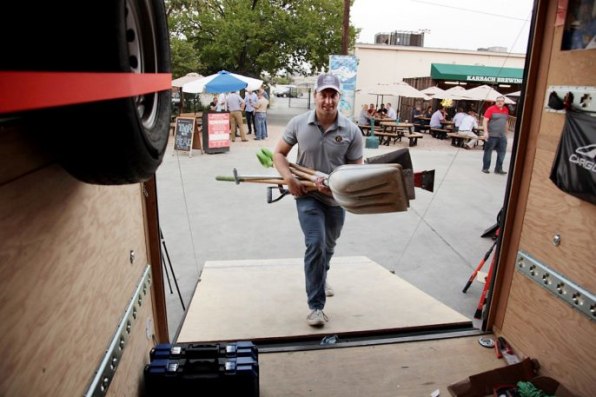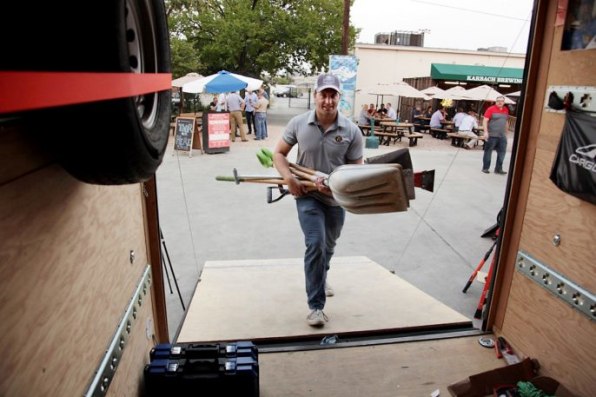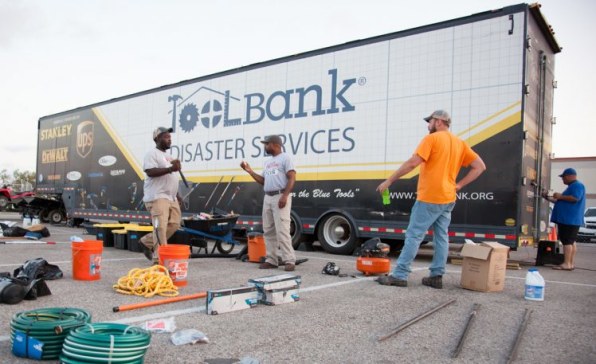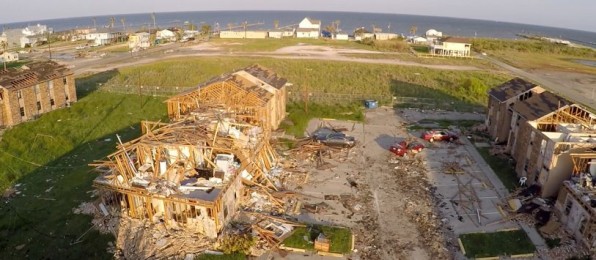
19 Sep ToolBank Was Supplying Houston With Rebuilding Equipment–And Then Irma Hit
When Hurricane Harvey made landfall in the Houston area in the last week of August, the disaster was met with an outpouring of relief efforts. Texas Gov. Greg Abbot estimated the costs would surpass Hurricane Katrina’s $100 billion in damages, and the funds flowed into Houston accordingly: The Red Cross set up a donation line; entrepreneurs like Jim McIngvale, CEO of Gallery Furniture, donated $50,000 and opened his stores as temporary housing; celebrities like Supernatural star Jensen Ackles brought in hundreds of thousands of dollars through crowdfunding platforms.
ToolBank USA, a nonprofit was founded 26 years ago as the Atlanta Community ToolBank, also sprang into action. The organization houses a large inventory of tools available on rental basis to local nonprofits and charities, who can lease them for 3% of their retail value for up to eight weeks at a time. That small fee, says Patty Russart, executive director of the Atlanta Community ToolBank, is by no means enough to fund the whole organization, which pulls in most of its funding through grants, but it does create enough of an incentive for borrowing organizations to return the tools and keep the model viable as a consistent community resource.

The organization, which a Houston-based volunteer has described as a “cross between a lending library and a Home Depot” is now national, with branches in eight other U.S. cities, and a disaster services trailer that operates like an affiliate on wheels. The Houston Community ToolBank was set up just three years ago, so when Harvey hit, the national office coordinated with all the branches in the organization to source additional tools–shovels, drills, saws, sledgehammers, pressure-washers–that UPS delivered to Houston for free.

Recovery efforts were quick to mobilize. The Houston ToolBank waived its rental fee and oversaw distribution of tools to a swath of aid groups, from the Team Rubicon, a disaster first response organization made up of military veterans, to the rebuilding nonprofit All Hands Volunteers, to myriad neighborhood associations and community groups. In Aransas Pass, a coastal city about 200 miles southwest of Houston, ToolBank’s mobile disaster services unit equipped volunteers with $400,000 worth of tools to do the crucial post-disaster work of clearing the mud and trash out of affected buildings to prevent mold and structural damage.
Then, just a week later, Hurricane Irma struck Florida. Pulled in two directions, ToolBank began looking for potential resources to direct toward the devastation caused by the second storm. In Atlanta, they had three more pallets of tools set for UPS to deliver to Houston; they stopped those, and sent them instead to Florida. Matt Walenciak, ToolBank’s disaster services director, told the national organization that he would need to raise money to source another trailer, in addition to the one stationed in Aransas Pass, to reach hard-hit areas of Florida.

But when ToolBank reached out to their usual donor pool, they heard the same thing over and over, Russart tells Fast Company: People had put everything they could into Harvey efforts, thinking, “what’s the chance there will be another major hurricane right after?” (With climate change accelerating at its current rate, the odds are increasing, and making the events that hit even worse.) To raise the necessary $225,000 for the second disaster response unit to send to Florida–and to keep the stream of funding for both relief efforts going–ToolBank has set up a text-to-donate line (832-327-TOOL) that will remain open until the first week of December. “We’ve had to get creative to make up for all of the resources that went to Harvey relief efforts,” Russart says.
Even large-scale disasters like Harvey and Irma have a tendency to fade from the public consciousness after the initial destruction, but it’s the responsibility of organizations like ToolBank, Russart says, to remain responsive and available to the lengthy recovery process these communities are facing. “The response phase is the first three months, and that’s what we’re in now—we just need as many volunteers equipped with as many tools as possible, on the ground and clearing out these communities,” Russart says. But the recovery process, which encapsulates building and street reconstruction, will be years in the making, and require a different set of tools than those deployed for recovery. In the meantime, ToolBank will continue to pull in donations–of both tools and cash–to grow their resources and be ready to meet the demands of back-to-back disasters that are threatening to become the norm.
Source: Fast Company




Sorry, the comment form is closed at this time.